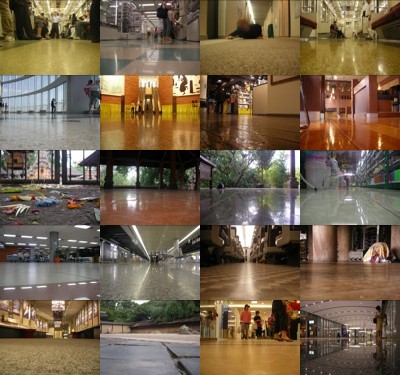25 July 2005 to 1 July 2005
Waltham: "Holiday" (1.5M mp3)
Because it's summer, and I really want to tie everyone down in the sun and blast these songs until you give up and get happy. This one is from the Awesome bonus EP, which here in Boston, at least, comes rubber-banded to Waltham's insanely unselfconsciously magnificent (and predictably self-titled) Rykodisc major-label debut.
Because it's summer, and I really want to tie everyone down in the sun and blast these songs until you give up and get happy. This one is from the Awesome bonus EP, which here in Boston, at least, comes rubber-banded to Waltham's insanely unselfconsciously magnificent (and predictably self-titled) Rykodisc major-label debut.
¶ 20 July 2005
After playing the Waltham album and the bonus EP a couple times each, I'm even more thrilled. This is basically the 2005-production band version of 80s solo Rick Springfield. If that doesn't seem like a good idea to you, it probably won't sound like one either.
Waltham: "Cheryl (Come and Take a Ride)" (1.9M mp3)
I haven't even listened to the rest of the album yet, this is just track 1.
I haven't even listened to the rest of the album yet, this is just track 1.
¶ Bored? · 11 July 2005
Come talk about movies...
And lastly, if for no other reason than that the time-stamps on our photos are the only journal I kept this time, the stubbornly and inexplicably interested are cautiously and apologetically welcome to click as fast as possible through the otherwise potentially interminable Japan+Bali 2005 extended instrumental all-plot remix.


Tokyo Metro, Tsukiji to Omote-Sando

Tokyu Hands, Shibuya

Nishi Shinjuku Hotel, Shinjuku

Tokyo Metro, Asakusa to Shinjuku

Mori Center 50F, Roppongi Hills

Mori Center 52F, Roppongi Hills

Shin-Yokohama Ramen Museum, Shin-Yokohama

Pronto, Shinjuku

Pura Dalem Agung, Ubud

Segara Giri Kencana, Menjangan Island

Taman Sari, Pemuteran

Delta Dewata supermarket, Ubud

Ngurah Rai Airport, Denpasar

shinkansen platform, Shinagawa

Hikari shinkansen, Shinagawa to Kyoto

Kiyomizu-dera, Kyoto

Kyoto Museum for World Peace, Ritsumeikan University, Kyoto

Ryoanji, Kyoto

OPA department store, Kyoto

Shinagawa station, Tokyo















